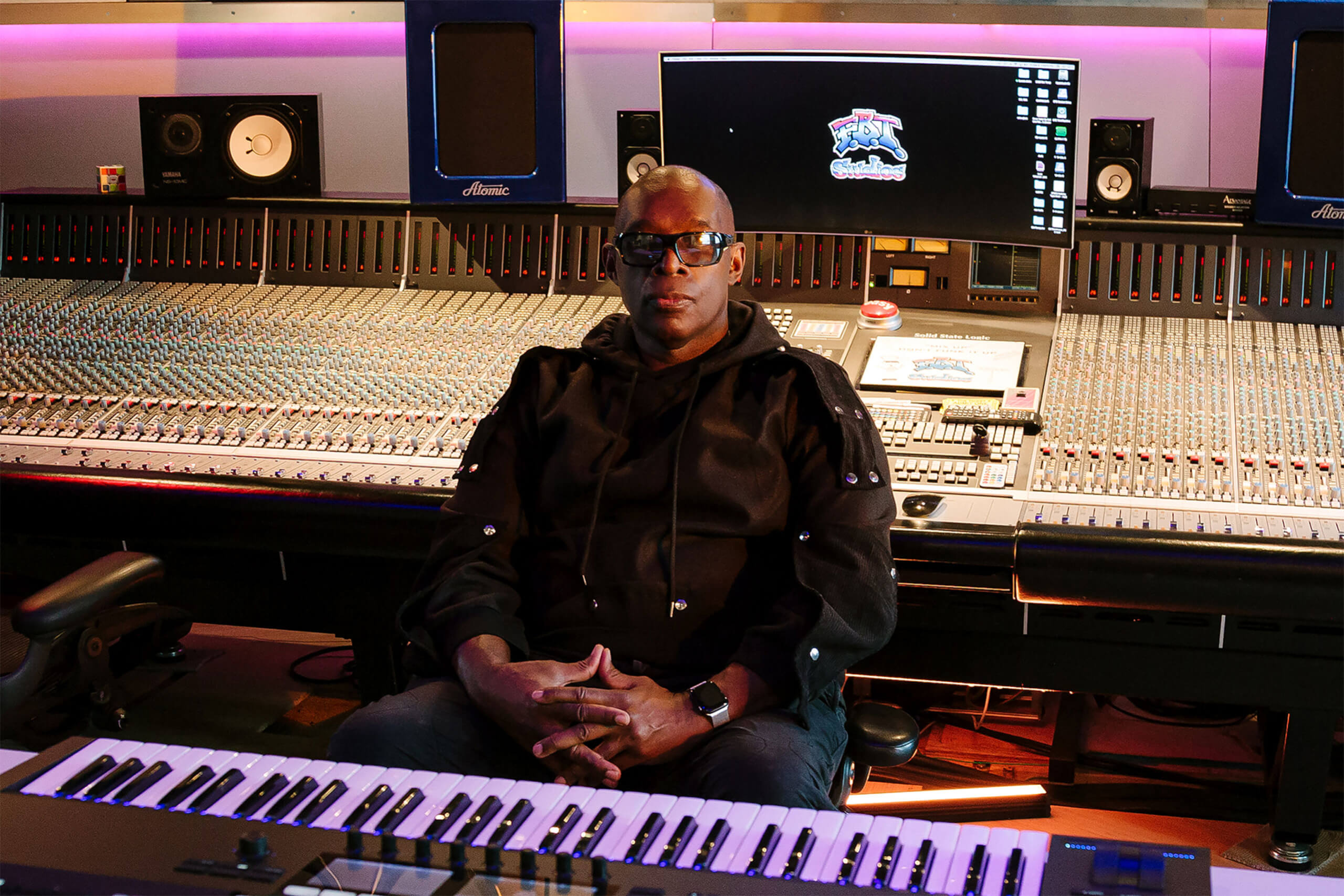
Kevin Saunderson is the past, present and future of techno
In his fifth decade on the scene, the Inner City producer is still on the lookout for the next challenge.
Image: Rose Catherine Hohl for MusicTech
Techno alone would guarantee Detroit legend Kevin Saunderson a place in the history books. Along with Juan Atkins and Derrick May, a trio frequently referred to as The Belleville Three, he built the sound and structures that generated an entire genre, a style now considered worthy of UNESCO cultural status — in Berlin, at least.
The man known as ‘The Elevator’ is techno. But Saunderson is also house and was tech-house before it existed as a term. His Global pop successes as Inner City signal a rare ability to shape the underground and the charts with intergenerational dancefloor perennials like Big Fun’ and Good Life. It’s a talent that landed him five US Billboard #1 hits and nine Top 40s in the UK.
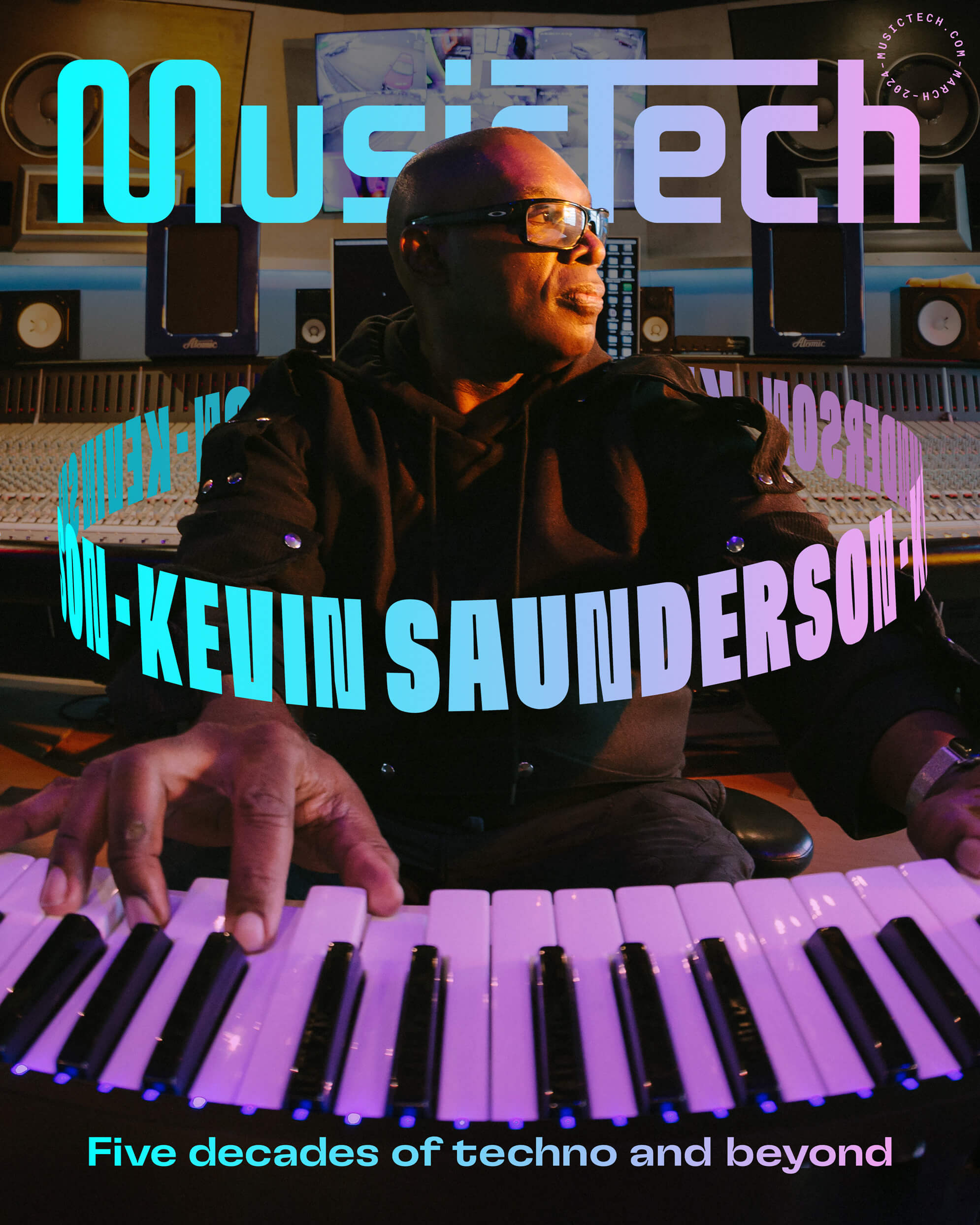
Even within this unique situation, there’s another level to Saunderson’s creative impact that genuinely makes him one of a kind: The Reese bassline. The iconic bass synth sound first appeared on his 1988 12-inch, Just Want Another Chance, under his Reese alias. The transference of artist name to hugely influential and much-sampled bassline places Saunderson up there with the likes of Gregory Coleman, the drummer of The Winstons who created the ubiquitous Amen break. Kevin Saunderson’s influence on the sonic fabric is categorical, literally.
The Reese bass is dark, it’s deep. It gets into your soul…I created it on a Casio CZ-1000
The internet is full of Reese bassline tutorials. Has the creator ever taken a peek? “I’ve seen a couple try to recreate the Reese bass,” he says from his home in Michigan. “They’re using different machines I didn’t even use – I created it on a Casio CZ-1000 – but the sound was close enough.” The thing about creativity, he says, is you can stumble across happy accidents. “I didn’t know I was going to create this bass. I created this bassline — I thought it was OK. But I thought ‘how am I going to enhance that line?’ [I began] looking around the oscillators of that unit, finding a sound and developing it.”
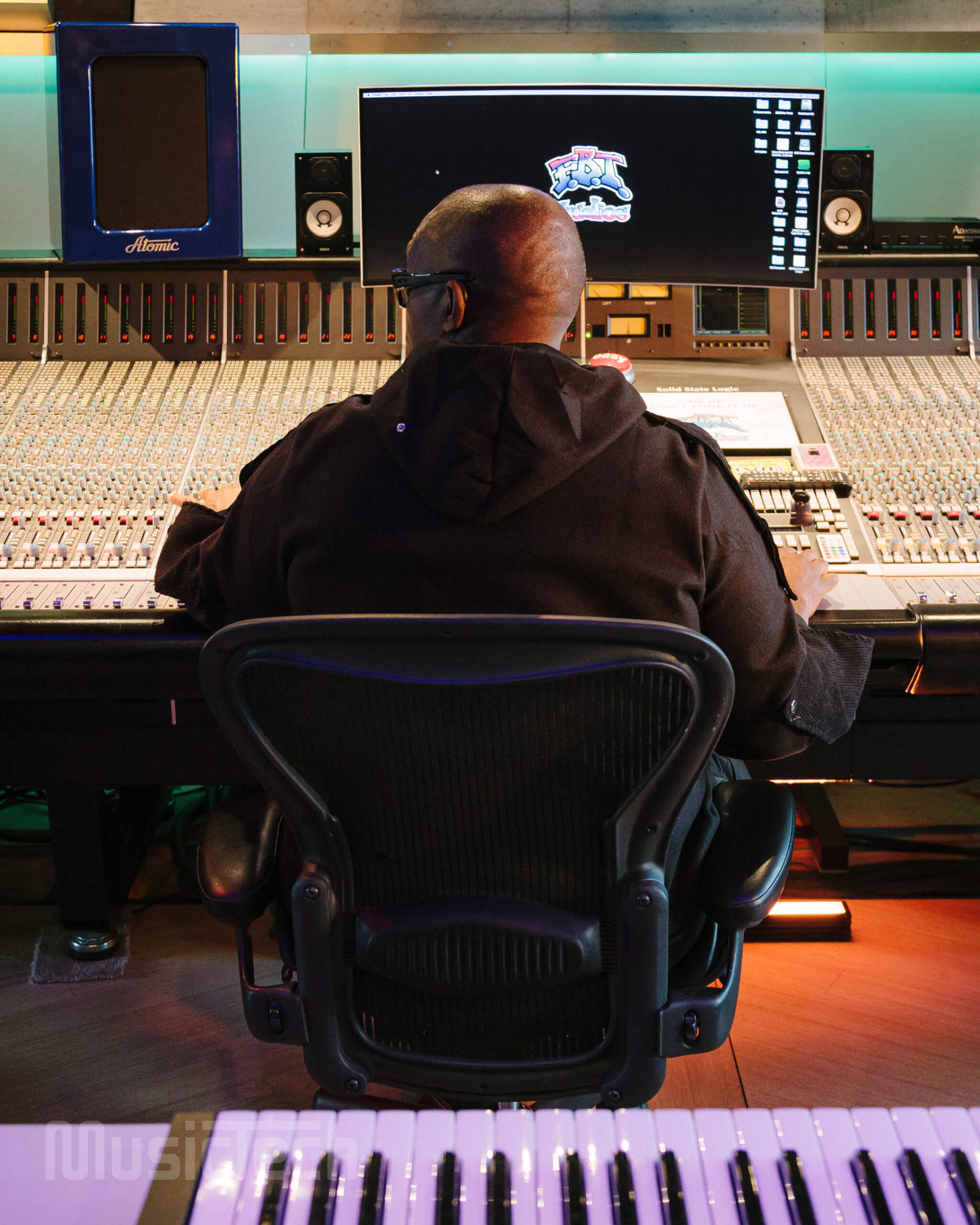
Burial’s mastering engineer, Jason Goz, once described the full-body effect of the Reese bassline in colourful style: “It’ll engulf you like a sleeping bag… a very dangerous, 50hz, shake-your-chest sleeping bag.” Saunderson appreciates the analogy and has his own way of describing how his bassline feels. “It’s dark, it’s deep. It gets into your soul. That’s where it grabbed me. It’s vibrant, powerful. It’s a hurricane of a bassline, the frequencies.”
This bass was built for the dancefloor. “Actually when I made that record, I made it for [influential 1980s New York club] Paradise Garage. I was thinking of the Paradise Garage. I don’t know if it was still open then but I went there several times so I always thought ‘how would it sound?’ I thought this track would work, get inside the dancers. I could see them dancing, screaming, and just twirling, doing their thing and it being played for an hour. Larry [Levan] playing it over and over.”
Right now, Kevin Saunderson is listing the different ways his musical world plays out in 2024. He’s about to head to Mannheim, Germany, for the 30th edition of Time Warp Festival. New releases on the rebooted KMS label include collaborations with his son Dantiez Saunderson and a compilation of Inner City remixes. There’s new music and live shows as Inner City and E-Dancer — also in collaboration with Dantiez — and DJ sets that allow him to go deep into house, techno and, sometimes, disco. Remember that, while Saunderson has become revered in producer culture for the harder side of his output, he’s always brought masses of soul to his productions.
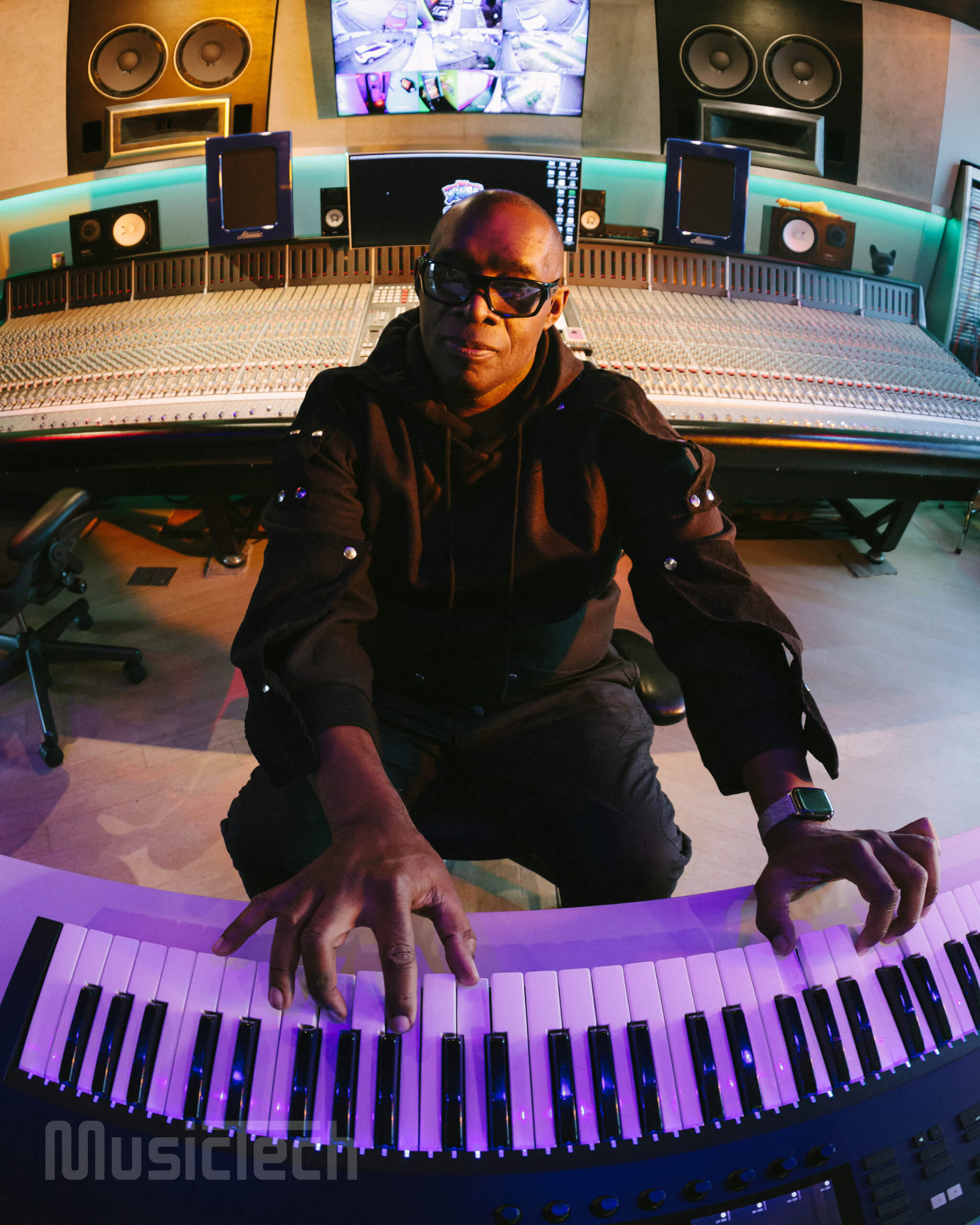
The day before our interview, he was DJing at the SXM festival on the Caribbean island of St Martin. It was, he says, a ‘beautiful people type of vibe’.
“They got some good soulful house music. I didn’t want to go there and bang it out. It wouldn’t have fit the vibe. They had some classics in there, of course, to remind them of history and keep them dancing.” Feedback in the form of movement is something he continues to appreciate. “There was this lady, she captured my eye because of the way she was dancing; she was connected. The expression and the music and the feeling she was having, it inspired me. She was feeling it. It was a joyful moment for her. I love it when I have those kind of connections.”
Having come through decades of club culture, he’s perfectly positioned to outline the different approaches required now that festivals, and clubs that operate like festivals, have become predominant. “In clubs, you can play records longer, in general. Festivals, you have to move a little quicker, but it depends what kind of festival you’re playing at … It allows me to play more popular tracks, classics. And then it depends on the club. It’s if strictly underground, dark inside, you can just get dirty with it.”
In the DJ booth, he’ll use four CDJ 3000s (“one of them is a backup, mostly”) and he’s a fan of Pioneer DJ’s V10 mixer, using it for his E-Dancer live shows and for DJ sets. “I like that mixer because it has six channels. It’s well thought out. You can play back to back using two different headphone sets, different volumes. With other mixers, you’re always switching headphones. I never really liked that bit, switching headphones with another DJ. Now you don’t have to.”
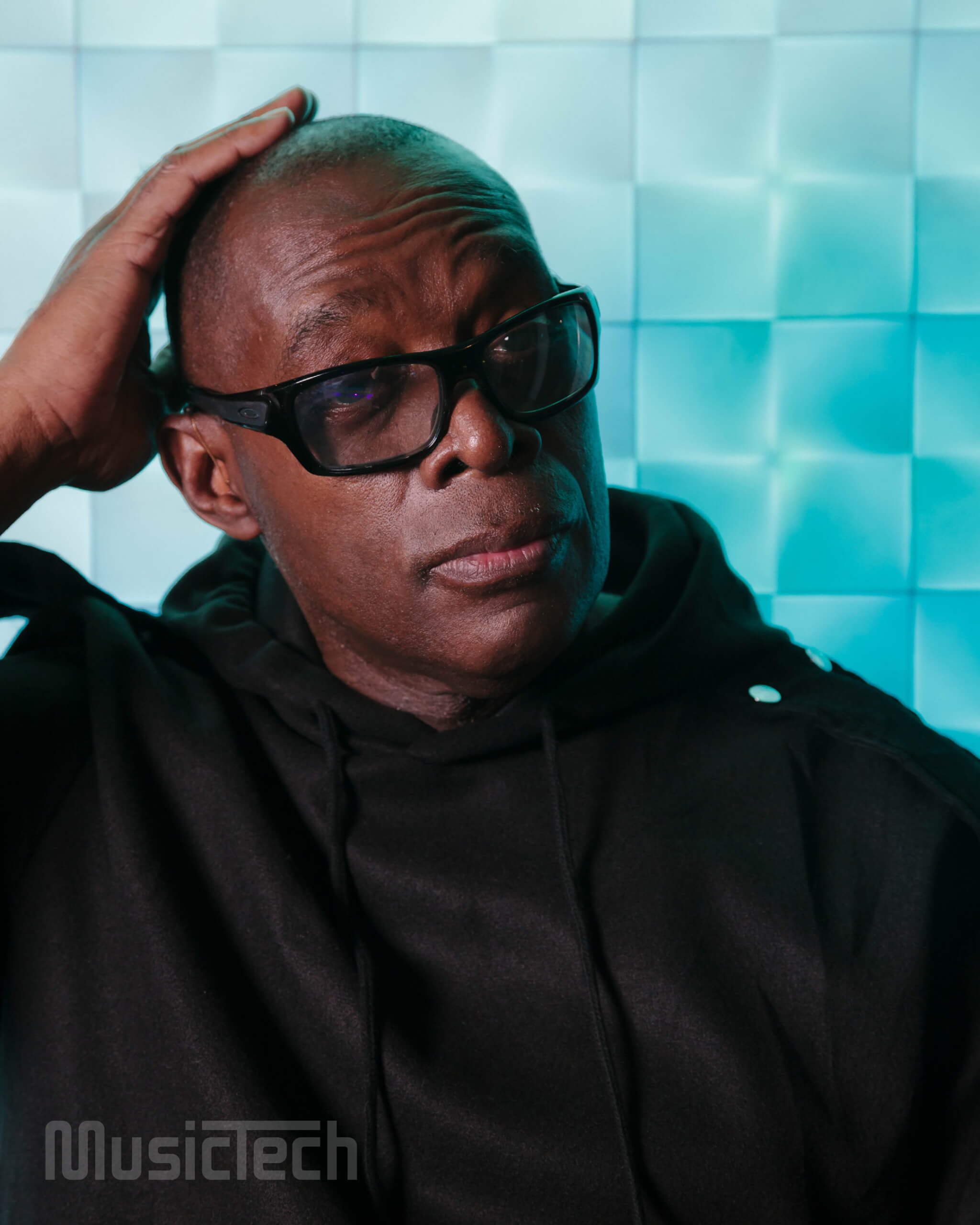
Recently, he’s gained a new occasional b2b partner: Idris Elba, who began as a DJ in Hackney before life took a TV-shaped turn. They hooked up after Idris played Inner City’s Big Fun at Coachella 2019, subsequently working together on an Inner City remix at Saunderson’s studio in Michigan. “We connected, talked music. When I perform at Movement Festival [in Detroit] I do a KMS showcase. A lot of the people I work with, collabs, I bring them to the stage. I thought that would be good to do, outside the studio.”
The KMS label came into being in 1987, after Saunderson observed his Belleville High School friends Juan Atkins and Derrick May putting out music on their own Metroplex and Transmat labels respectively. In fact, the first KMS release Triangle of Love, with Saunderson recording as Kreem, had a pre-life on Metroplex. “I didn’t have a label at the time,” he says. “I was watching Juan, and I was like ‘I can do this myself’, so I asked Juan politely, ‘can I have my record back?’. We was friends, back then there were no contracts. He was cool about it, no problem.”
We made our own path. As you get older you try and open up doors for other generations.
Initially, the label existed to give Saunderson control and to release his own music and collaborations, and it released multiple foundational tunes including classic Inner City and Reese & Santonio cuts. In typical Detroit style, the label also acted as a platform for new talent, releasing super early tracks by Blake Baxter and Chez Damier.
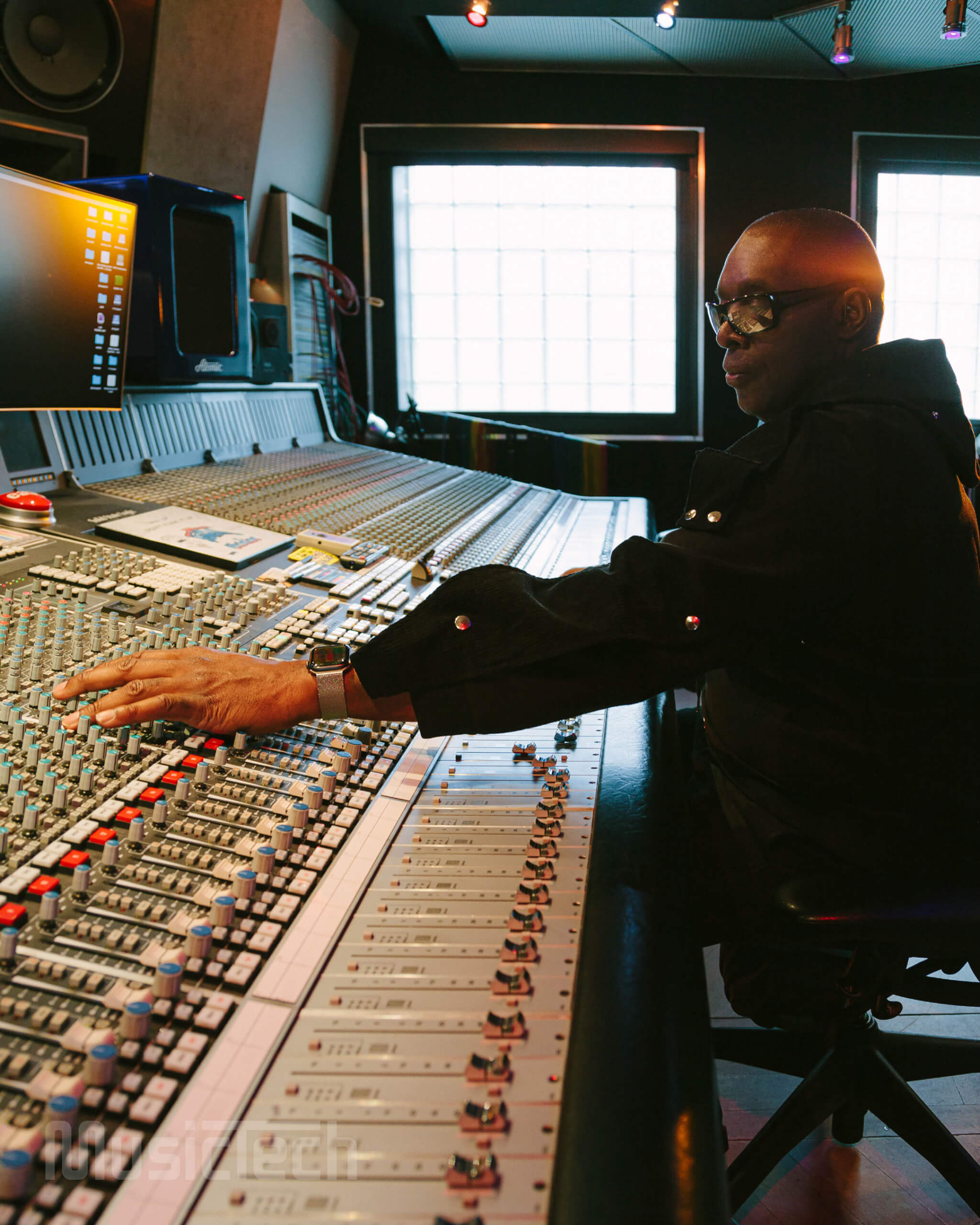
The studio was in downtown Detroit, on the intersection of Riopelle Street and Gratiot Avenue, and next door to Transmat and Metroplex. “There was a triangle on that block,” he says. “Everybody used to come through: Carl Craig, Stacey Pullen, Kenny Larkin, Richie Hawtin, you name it. They was just excited about being a part of the music. They’d go from one to the next, some I would sign, some Derrick would sign, just depending on the connection at the time. I was into everything, not just techno, not just house, not just tech-house, it’s whatever we feel is right. Vocal, instrumental, fast.” Reborn in 2023 and releasing new tunes and remixes, the label is now run by Saunderson’s son Dantiez.
“Nobody did what I did when I did the first remix for Wee Papa Girl Rappers [‘Heat It Up’]. I completely changed the game.”
“A lot of music has come out of Detroit that’s been impactful in the world. There’s something that could come out of this place again. But it takes someone to give somebody an opportunity. We made our own path. As you get older, you try and open up doors for other generations.” It’s a way of operating that’s embedded into his city, which has leaned heavily on collective approaches — although that self-reliance and communality were necessary because the city was left to decline to a degree that’s hard to properly appreciate from outside.
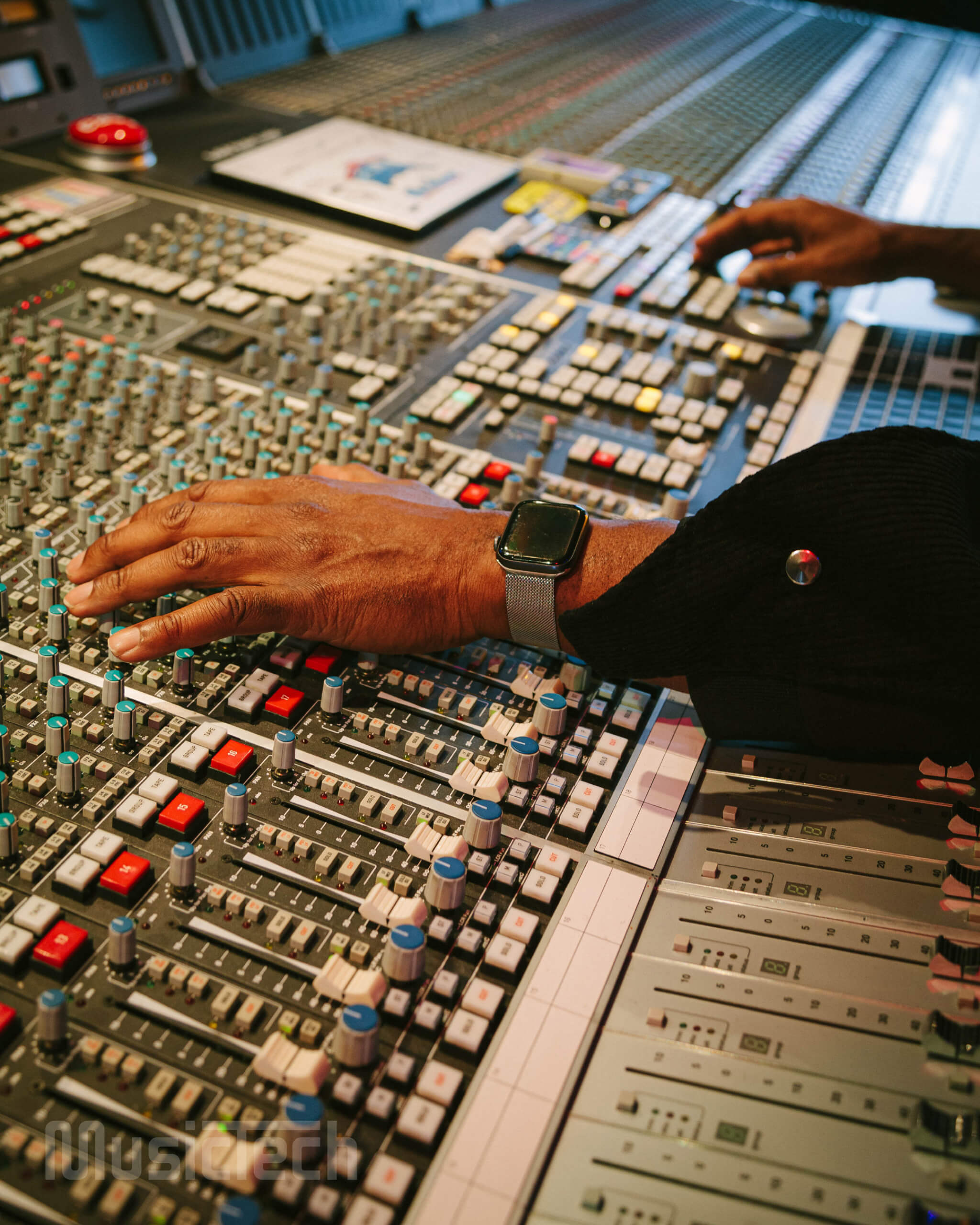
Most famously, there’s the music collective, Underground Resistance. Along with KMS’s-pro youth attitude, there’s also the Underground Music Academy co-founded by DJ and producer Wajeed, which began with informal mentoring of new Detroit artists and now operates under the tagline ‘Building the future leaders of electronic music.’ “We like it when we see young Detroit talent,” says Saunderson. “We want to help those inspired by what we done. I always preach the past, the present and the future. With KMS, the plans continue.”
A mix album, The Best of KMS Classics, came out in January 2024 on Armada Music and featured fifteen underground originals. Inner City Remixed came next with new versions of classic tunes from Carl Craig, Carl Cox, Armin van Buuren and IDRIS. “Remixes were done back in the day [by] Shep Pettibone, Jellybean Benitez, Larry [Levan]. Re-edits to make it more DJ-friendly. Nobody did what I did when I did the first remix for Wee Papa Girl Rappers [Heat It Up]. I completely changed the game. There’s a reason why they call me The Elevator. That fits right in there.”
Saunderson’s remix of the late-80s London MC duo was an early example of a producer taking a whole tune apart for a remix, treating the source material more like a sample around which a whole new tune could be built.
“People should always know: that remix didn’t just change the game for electronic music – hip-hop DJs started doing it. Everyone started doing it. It’s just part of my legacy.”
Legacy ensured, he’s looking to the next challenge. A collaboration with Patrick Topping, Fresh, featured on 2022’s The Batman and he’s considering moving beyond sync into composition for sci-fi movies. “My goal is to tour another three four five more years, then develop into scoring films,” he says. “I’ve been touring for many years. I’m getting to the point now where I want to sit back in the studio and give me a different challenge. I want to see how I fit into a different world to inspire me differently.”
Studio-wise, his process has shifted as technology progresses. “I’m definitely more in the box than before, but I wanted a board, something I could put my hands on — so if I want to mix raw, I can have all my tracks. Sometimes you want to push a button instead of pushing a mouse.” On a practical level this means a PreSonus StudioLive 32S, Ableton Live 12 and Push for live shows, a few synths (namely the Roland Juno and Jupiter) and Barefoot speakers (‘very powerful, great low-end’). Valhalla DSP’s reverbs have the lush sound he’s after, and the Soundtoys’ Little AlterBoy allows him to change vocal audio quickly, using it for stacking, different pitches and to ‘create some fresh sounds.’ Native Instruments’ Maschine is in the picture too. “It’s a great creation. You can be hands-on but create in the computer. It kind of reminds me of the early MPC days.”
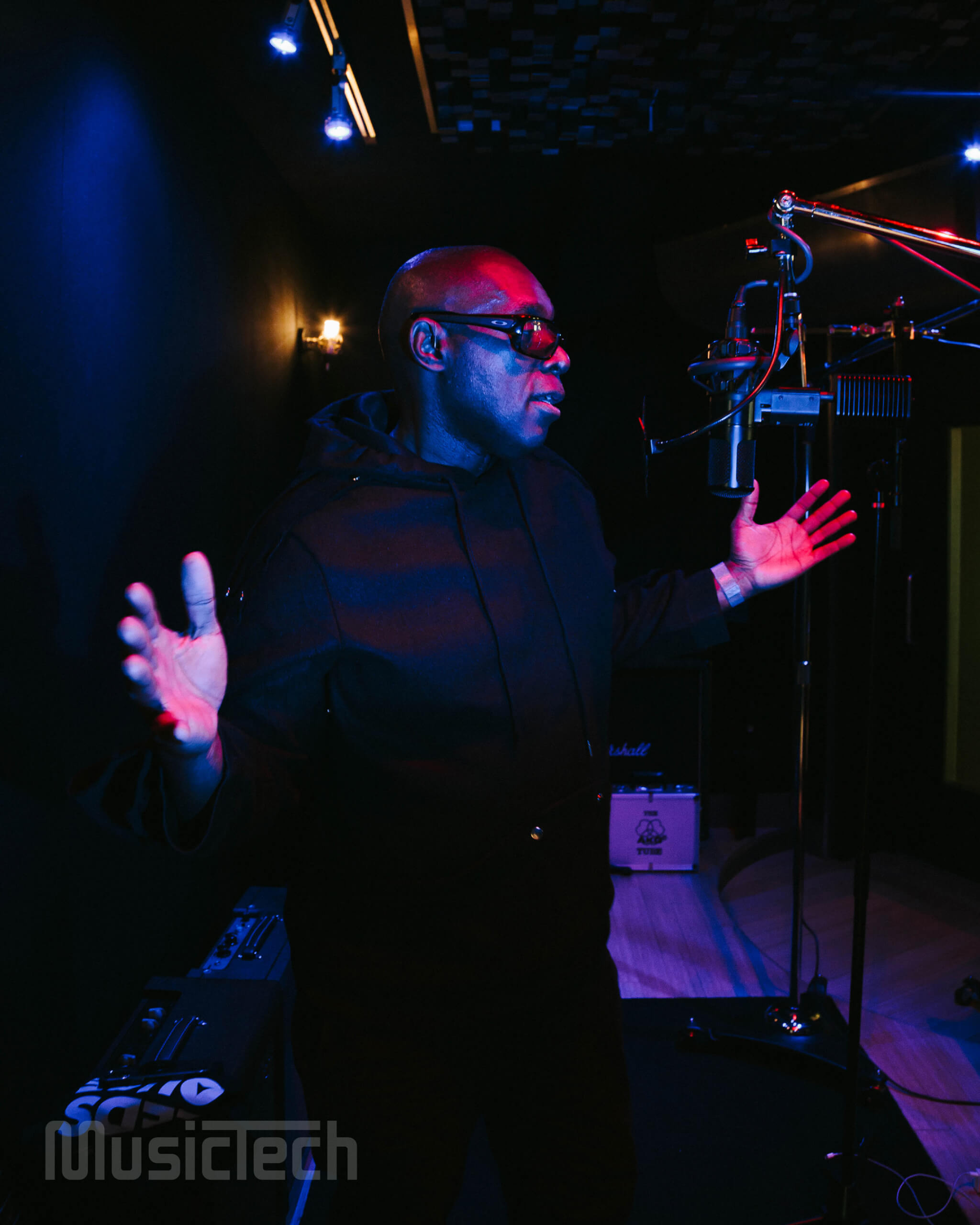
In terms of tempo, he likes to average around 128bpm, but being on the festival circuit means he’s well aware of the contemporary conversation about dance music speeding up. “I played as fast as 135, maybe even close to 140 recently. It depends on the track and it depends on the room. I can get it up there, tough and fast. It still has to have a groove and it still has to sound funky, it still has to have some swing.
Nobody did what I did when I did the first remix for Wee Papa Girl Rappers [‘Heat It Up’]. I completely changed the game. There’s a reason why they call me The Elevator
“There are tracks I’ve heard, stuff that I’ve found very fast…I don’t understand how people dance to it but, you know, it’s working for other DJs and producers, I can tell you that. You can’t knock it.”
Online life is fast, and perhaps that feeds into the dancefloor. “Everything goes in circles, but there’s time where people need to feel that energy, differently. I don’t mind playing fast but I still got to find that connection between the creativity, the music and the soul that’s within it.”
Saunderson recently posted about his ongoing belief in the positive power of house and techno. Asking about it unleashes a story from the early days. “My vision always for this music was for the world,” he says. “I was on campus, Eastern Michigan University [where he studied telecommunications] making the music and being inspired — my friends looking at me like I’m crazy. I’m thinking, ‘you don’t know’. This music is meant for people, it’s meant for the world.”
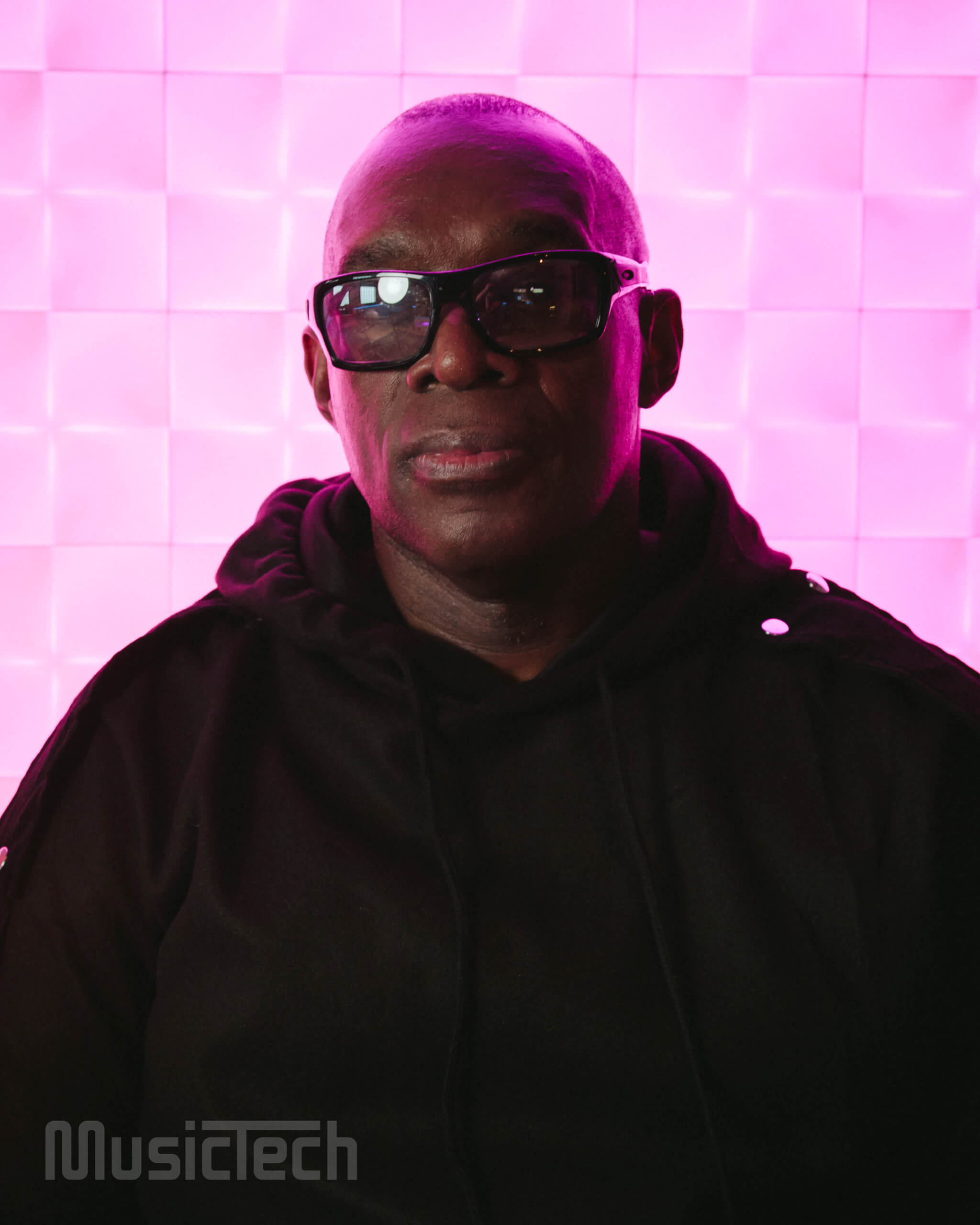
University life back in the mid-1980s Midwest was a particular type of experience. “It was a little more segregated back then, still. Black fraternities, white fraternities. I was in a Black fraternity, Phi Beta Sigma. I became a DJ for my organisation, for my brothers. I started playing a lot of records on campus parties. The white fraternities would have these parties as well, but theirs would be outside, these Frat Houses, like Animal House. I’d be looking, no-one’s dancing, they just drinking beer, and nobody would play or understand this music. I kept saying to myself, ‘I know this is for the world and it’s a positive impact’. It took time, but it started to happen.”
He pauses.
“Here I am, 40 years later…
“I’ve been travelling, making music to touch people, inspired other artists who have inspired other artists and it’s continuous. It’s a connection between the frequencies of the music and love for what the music should be doing for people.”
Techno as a genre still has issues with whitewashing, but the sons and daughters of the non-dancing Frat Boys are now at the front of the festivals, moving to Saunderson’s frequencies. The Elevator keeps them moving.